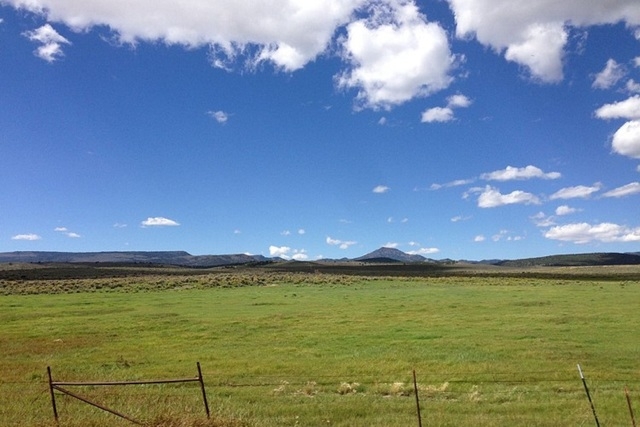Panguitch, Utah, a hub for outdoor exploration

Set in a lovely valley between high, forested plateaus, historic Panguitch is central to many scenic and recreational attractions in Southern Utah. A hub for exploring state and national parks, national forests and scenic byways, Panguitch serves tourists and outdoor enthusiasts year-round.
The town is about 240 miles from Las Vegas. Follow Interstate 15 north into Utah through St. George and Cedar City to state Route 20 north of Parowan. Drive southeast 21 miles to U.S. Highway 89 and turn south. Panguitch is about 10 miles from the junction on U.S. 89.
Route 20 follows the pass through the foothills used by the first Mormon settlers sent out from Parowan to colonize a new valley in the spring of 1864. They labored all summer and fall to build shelters and plant crops in fields they carved into the verdant valley. Winter often arrives early at 6,600 feet elevation. Frosts destroyed most of their fall harvest, leaving the settlers to face starvation.
A small rescue party from Parowan struggled through the deep snow to bring help. They used the handmade quilts they carried to walk over the snow, which is commemorated every June during the Panguitch Quilt Walk. Quilt Walk Park in Panguitch features a memorial plaque dedicated to the handful of pioneer rescuers who saved the new settlement.
Bad luck dogged the early settlers. Indian troubles to the north erupted into the Blackhawk War, prompting Mormon church officials to recall the colonists. Panguitch lay abandoned in May 1865, its first houses built and the second planting of crops flourishing. Five years later, Mormon leader Brigham Young decided the area should be resettled. New settlers arriving in 1871 found the houses untouched and the crops still standing in the fields. They erected a fort and lived inside until they built more housing and replanted the fields.
The name chosen for the community means “big fish” in the local Paiute language, after the trout prevalent in area streams and lakes.
The reinvigorated settlement soon hummed with activity. Panguitch produced enough grain to warrant a grist mill. Lumber cut from surrounding forests was processed in local sawmills and shingle mills. Panguitch soon had a tannery to turn hides from its livestock into leather.
Nearby assets included deposits of lime and clay, which were processed in local kilns. The Panguitch clay, when fired, produced distinctive rosy bricks. Many workers were paid in bricks, giving them materials to build their own homes. As a result, Panguitch boasts one of the finest collections of native brick buildings in the West, dating from the late 1870s to 1940.
Two self-guided tours are available locally or at panguitch.com. The first tour invites visitors to stroll or drive from Quilt Walk Park to admire 30 historic buildings downtown that retain their 19th-century appeal. Most have been repurposed over time, but the handsome Garfield County Courthouse has served the county since frontier times. The second tour points out two dozen residences, many in Victorian styles. Built to last using the locally produced rose-colored bricks, most have been occupied for well over a century, often by the same families.
Although Panguitch remains a small, rural town, it offers visitors attractive amenities, including lodging in motels and bed-and-breakfast inns, a selection of eateries, travel services such as gas stations, a variety of stores and at least one museum. More travelers arrive in the summer, but many come for fall color or hunting or for winter sports such as ice fishing, snowmobiling or cross-country skiing.
Roads from Panguitch explore spectacular landscapes. U.S. 89 continues its scenic journey to historic sites and splendid parks. Nearby state Route 12 is one of the most scenic byways in the country. State Route 143 accesses fishing streams, Panguitch Lake, national forest camping, beautiful Cedar Breaks National Monument, and resort and ski facilities at Brian Head. Winter snow will restrict access to parts of the road.
Margo Bartlett Pesek’s column appears on Sundays.